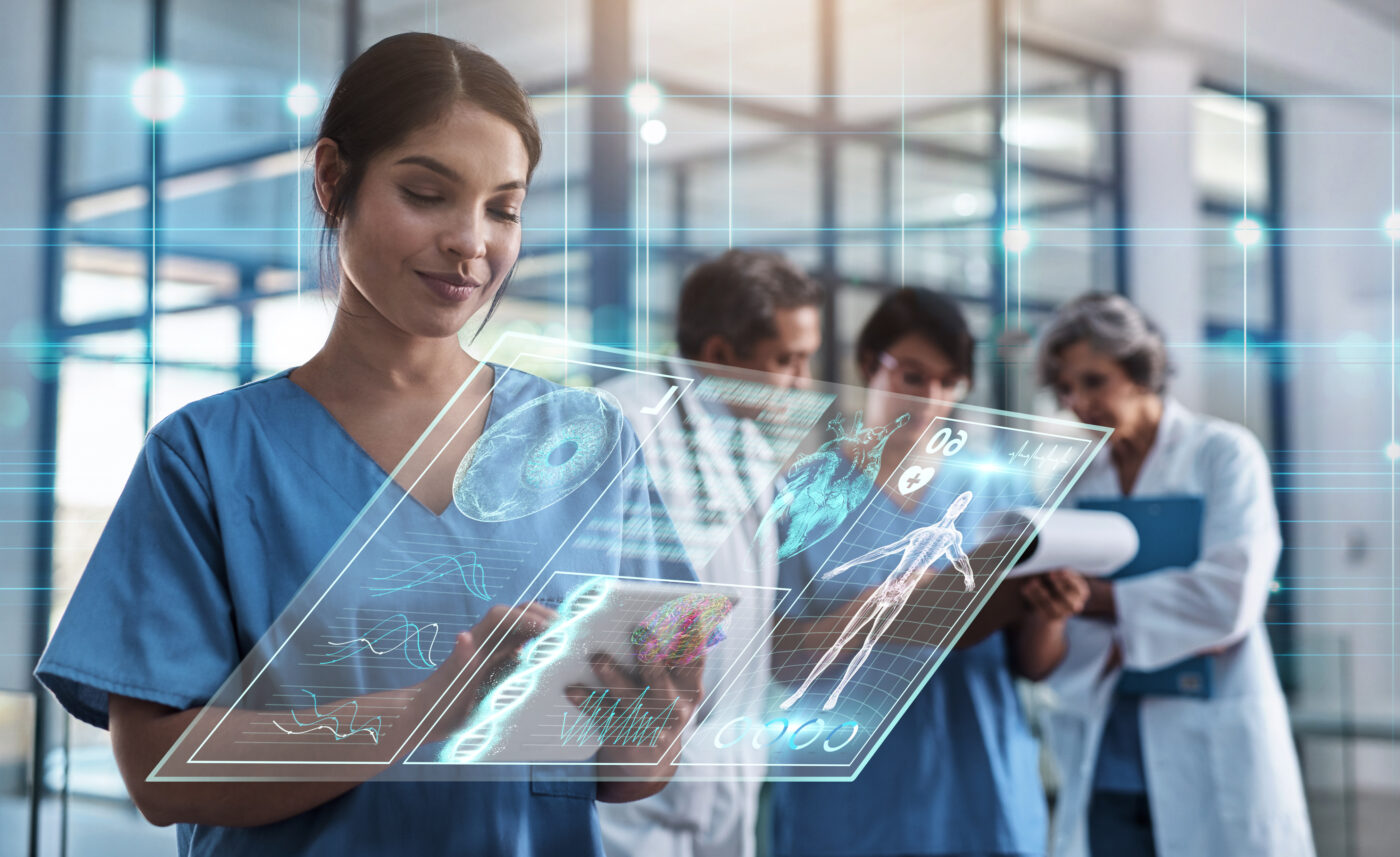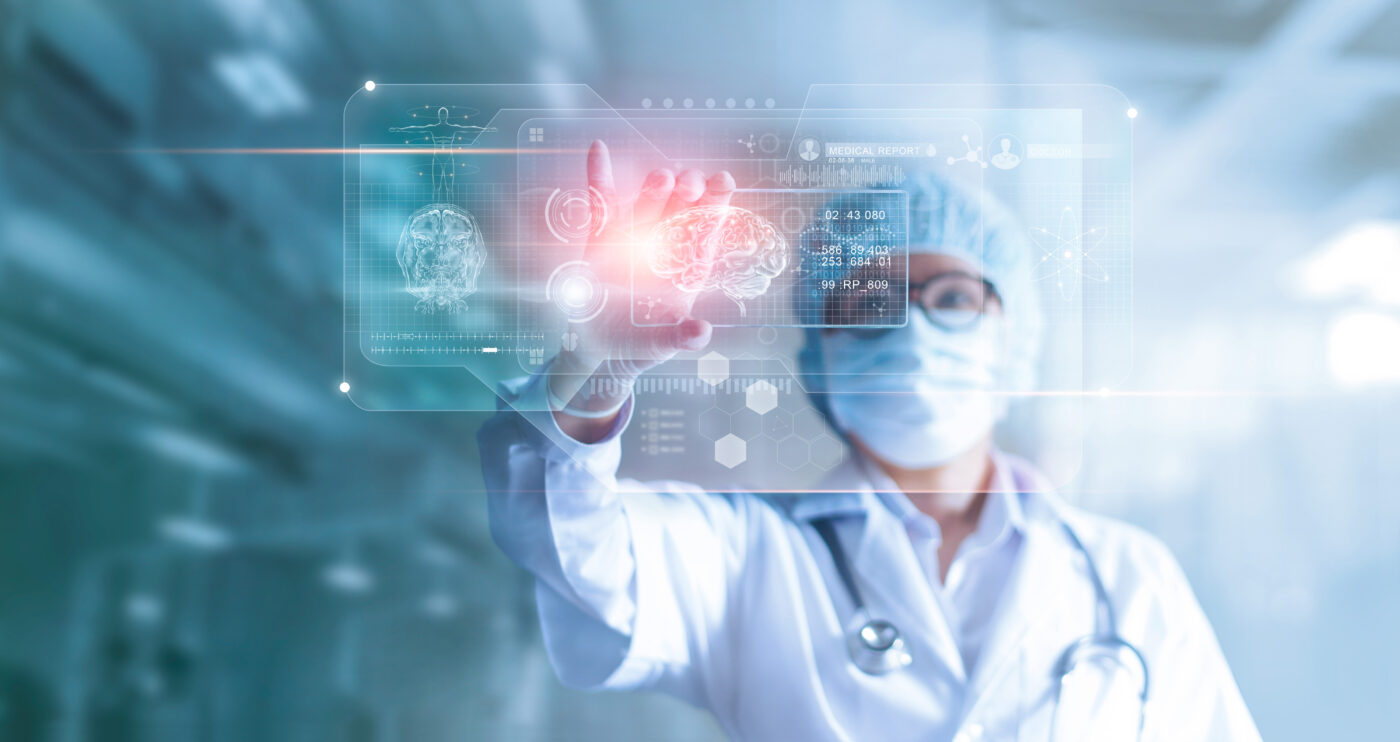In 2023, the first robotic liver transplant was successfully completed in the US. The patient, a man in his 60s, experienced less pain and quicker recovery compared to a typical procedure and was back in the swimming pool after just seven weeks of recovery. To say it went well is a bit of an understatement.
There’s no denying that technology is transforming healthcare – in the US and around the world – and the advancements being made aren’t expected to slow anytime soon. This isn’t limited to the hospital floor, either. Medical education technologies are transforming the way budding practitioners and surgeons are trained, bringing more hands-on experience to a wider pool of students. Interested to know more? We’ve compiled some of the top tech-based changes happening in the US right now.
Virtual Reality for Risk-Free Training
Virtual reality (VR) is a new must-have in the medical training industry. With the use of headsets and controllers, pupils are able to gain first-hand experience in a wide range of different procedures, improving their experience and better preparing them for entering the world of healthcare with advanced training technologies.
For example, there are programs already being used that allow trainee surgeons and dentists to carry out procedures virtually. They’ll be able to select the right tools, work on virtual patients, and be watched by their mentor all without the risk of operating on a real human body. When it comes to an actual surgical procedure, they’ll be far better prepared for the hands-on experience and more confident in their skills.
As VR developers 3D Walkabout say, using VR to train surgeons “Reduces the risk to patients and reduces the cost of training doctors by eliminating the need for physical resources”. The medical education experience has transformed the skills that students graduate with and created more capable, practiced practitioners.
The possibilities of VR training go beyond the classroom, too. When practicing for rare, difficult procedures, professional surgeons can hone their skills and do a virtual walk-through of the surgery, better preparing them for the real thing.
Remote Health Monitoring Tools
Remote health monitoring involves collecting patient health data beyond the confines of a traditional healthcare setting. From room motion sensors that monitor patient mobility to wearable tech that tracks heart rate and blood pressure on the go, they’ve made it possible to keep monitoring patients once they’ve left the hospital.
In terms of training and education, remote health monitoring has created reams of data for pupils to learn from. Advanced monitoring tech can generate real-time information from existing patients, for example, that pupils can then use to analyze the effectiveness of treatments. It gives pupils a keen insight into how patients keep up their treatment alongside other lifestyle habits, providing a more realistic approach to healthcare.
Data can also be used to adjust decisions. For example, a trainee can look at the course of action a previous doctor took, and the results are seen via data and use that to better inform their own decisions for a similar case. It leads to treatments based on evidence and a case-by-case approach to healthcare rather than one based on broader education and averages.
Online Learning Platforms
Online learning platforms bring education to a wider audience, opening up the potential of training for the medical industry to a bigger pool of students. With digital access to lecture videos, module materials, and online exams, pupils can engage in their courses from anywhere in the country. This makes it easier to carry out independent study and reinforce what they’ve learned, helping pupils get to grips with tricky topics in their own time.
Online education isn’t a rare concept, either. Around 8.5 million US students are enrolled in online classes at higher education institutions, a figure that’s only expected to rise.
This tech revolution has pushed the boundaries of learning far beyond the classroom. Now, students can keep up with lessons even when they’re not able to attend lectures and access a wealth of valuable resources to strengthen their education. The result? More confident, knowledgeable medical professionals who aren’t held back by where they learn.
Robotic Simulations of Complex Procedures
The healthcare robot market is set to boom this decade with a predicted market value increase of $7.54 billion, from $3.34 billion in 2022 to $10.88 billion in 2030. But how is autonomous tech aiding the medical education industry?
One of the main benefits of robots during training is their ability to record surgeries. While carrying out a procedure, many robots will store visual data and other analytics. The recordings can then be played back for students at a later date or used to create realistic VR training simulations.
This recorded data is particularly important for rare surgeries and gives students an invaluable look at a procedure only completed once every few years. The videos can be shown to anyone about to undertake the same surgery, too, and used as a refresher before they begin.
Audience Response Systems
Moving away from robots to a simpler tech integration, audience response systems (ARSs) are already becoming key tools in the medical classroom. These handheld devices are given to every pupil and then used to create a voting system, with a question posed and each student choosing from one of two or more answers.
One of the main perks of ARSs is that they can be anonymous. Students will feel more confident saying what they think is the right answer, which leads to increased engagement and participation. However, the teacher may also want to register each device to a different student to gauge where they are in their individual learning journey. Even if this is done, none of the rest of the class will see their response, making it ideal for quieter pupils who may feel nervous to engage.
Aside from increased participation, there is a huge range of benefits to using ARS in healthcare education, including:
- Helping teachers reflect on their performance
- Giving teachers a better understanding of the knowledge of the class as a whole
- Boosting student self-awareness in regard to their own knowledge
- Providing a great debate starter
Outside of the classroom, the data collected from ARS can help influence the healthcare syllabus and give a birdseye overview of the current knowledge of budding practitioners.
Final Thoughts
From robots to virtual reality in healthcare, the medical world as we know it is undergoing a vast shift. For our up-and-coming interns, that can feel a little daunting, but we hope this article has helped show you how exciting the inclusion of medical education technologies – and tech as a whole – in healthcare is.
For more healthcare news or guidance for your medical internship, be sure to join the International Medical Aid community.



